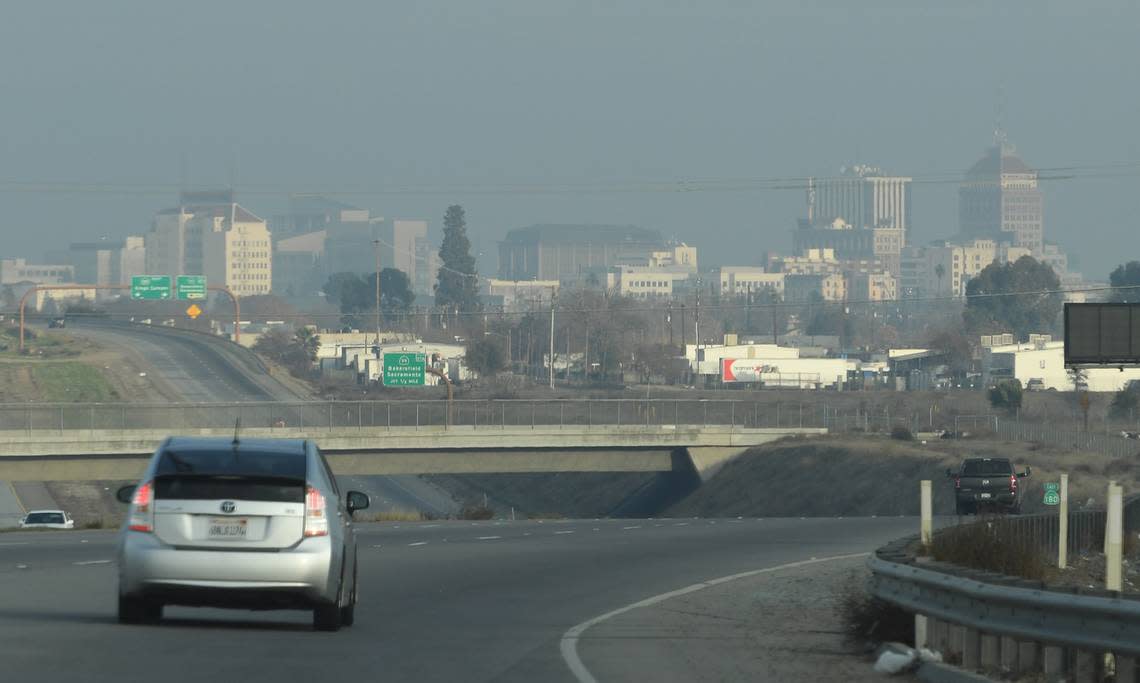Valley has put up with bad air long enough. Here’s a way to loosen grip of polluters

For those of us living in and around Fresno, triple-digit temperatures and bad air come with the territory.
There’s a difference, though. Hot summers in the San Joaquin Valley are inevitable. We can’t tell the sun to shine less brightly. However, the air we breathe on many days, lungful by lungful, doesn’t have to be so hazardous to our health. We’ve just accepted — or been led to conclude — that the problem is too large, complex and intractable for anything to change.
Part of the reason we’ve gotten here as a region is that the San Joaquin Valley Air Pollution Control District (the agency responsible for air quality planning, monitoring and enforcement for eight counties) isn’t really on the side of residents. Rather, its governing board is stacked with elected officials beholden to industries that are the largest sources of stationary pollutants. In a few cases, they’re active participants.
A bill by state Assemblymember Joaquin Arambula, D-Fresno, threatens to disturb the status quo in air districts like ours that consistently fail to meet federal air pollution standards. Including those set so long ago — 1997 for PM 2.5 — they’re no longer preventive.
Which is reason enough for Gov. Gavin Newsom to sign Arambula’s bill without a moment’s hesitation. Certainly before the Sept. 30 deadline.
Opinion
AB 2550 is opposed by the boards of supervisors in all eight counties served by the Valley Air District, plus the cities of Clovis and Bakersfield, plus several farm bureaus and more than a dozen groups associated with agriculture and oil.
What are all these folks so steadfastly against? In essence, any law that widens the input and authority over how our region’s unhealthy air should be combated. They want state regulators and community organizations to butt out so the powers-that-be can continue spinning their wheels and passing the buck.
The actual language contained within AB 2550 is fairly simple. In air districts that fail to meet federal pollution standards, it requires the California Air Resources Board to “coordinate” with district officials and community organizations in order to “identify gaps” in both state and local attainment plans.
The bill also requires state regulators to “provide additional monitoring and enforcement capacity” for the region’s largest stationary pollution sources (i.e. factories, refineries and dairies) and to provide at least one public hearing regarding the district’s attainment plans.
Sounds reasonable, right? Not when the ultimate goal isn’t cleaner, healthier air but to maintain a firm grip over a failed process.
“This status quo is not acceptable,” Arambula said during a May committee hearing. “In the face of a decades-long health crisis, the California Air Resources Board must engage more strongly on this.”
Fresno No. 1 in daily pollution spikes
Fresno continues to be the No. 1 city in the U.S. most affected by daily particulate spikes, as ranked by the American Lung Association, followed by Bakersfield in second and Visalia ninth. One reason is that for too long, the Valley Air District has been permitted to place industry profits over community health.
The stranglehold of certain industries is so strong that any requirement to adopt healthier practices that don’t foul our air or damage our lungs must seemingly always be accompanied by heavy financial incentives. As if all those doctor visits for our kids’ asthma (roughly one in five are asthmatic) or hospital stays for strokes and heart attacks don’t extract an even larger price.
More than 1,200 San Joaquin Valley residents die prematurely every year from exposure to PM 2.5, the fine particulate linked to a variety of health ailments. If that many people were killed in auto accidents, wouldn’t we demand something be done?
I’m not saying Arambula’s bill is a cure-all for the bad air that ails us. It doesn’t change our pollution-trapping topography, or keep winds from blowing from China or the Bay Area. Nor does it reduce the number of cars and semi trucks zooming up and down our freeways. Let alone prevent wildfires from ripping through our mismanaged forests and filling our skies and lungs with smoke.
Those things are beyond the control of any single region. The Valley Air District isn’t (and shouldn’t be) held accountable for them. However, the same doesn’t hold true for farms, factories, refineries and the like. AB 2550 holds local officials’ feet to the fire for pollution sources they can control, but won’t.
Time for that signature, Gov. Newsom.
